Home » Hunting Dogs » Brittany: Breed Characteristics, Abilities, and History
Brittany: Breed Characteristics, Abilities, and History
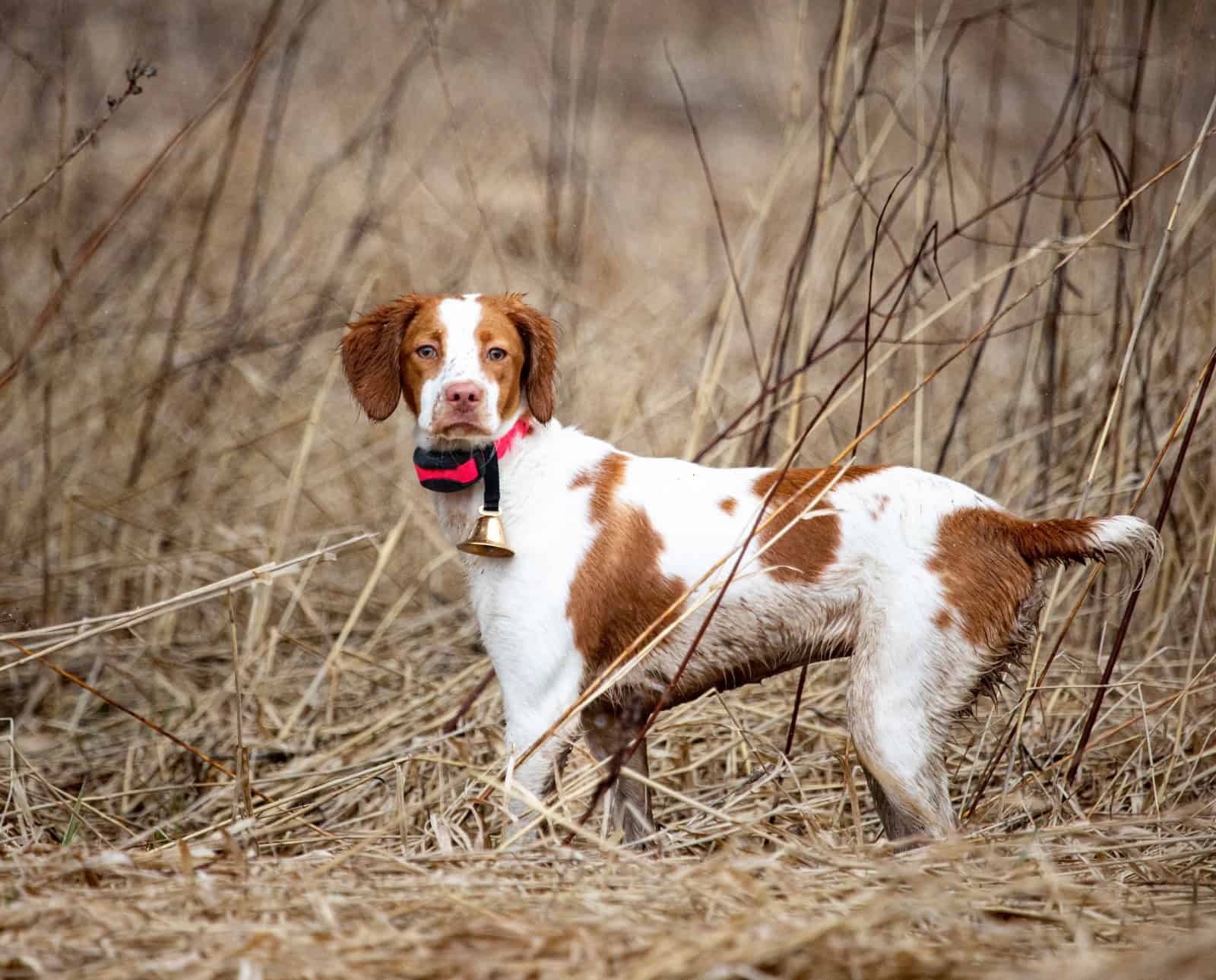
From their home base in Winnipeg, Craig Koshyk and Lisa…
How a little French spaniel developed into an internationally popular versatile hunting dog.
Brittanies are the fulfillment of a French dream to build a better bird dog. I am sure that if those old braconniers from La Bretagne could see the breed today, they would be thrilled to know that Brittanies have conquered the world.
Listen to more articles on Apple | Google | Spotify | Audible
I’ve seen Brittanies in European trials. I’ve shot roosters and ruffed grouse over Sporty, Bandit, and Buster, three tremendous Brittanies owned by a good friend. I’ve spoken at length with Brittany owners and breeders and some of the best trainers in the world. The more I learn about the breed, the more I admire it.
If you really want to understand why hunters fell in love so quickly with the little dogs from Brittany, watch a couple work a cattail slough in North Dakota and pin rooster after rooster for their proud owner. Or attend a spring field trial north of Paris and watch the cream of the Épagneul Breton crop fly across the ground seeking wild partridges. Or ask any Brittany owner how their dogs are around the house and hear nothing but praise for the breed’s loving temperament.
“The Brittany breed is the complete package: upland hunter, waterfowler, retriever, tracker, and loving family member,” said Nell McKim, a Brittany owner and breeder and NAVHDA member. “Their medium size makes them easy to live and travel with.”
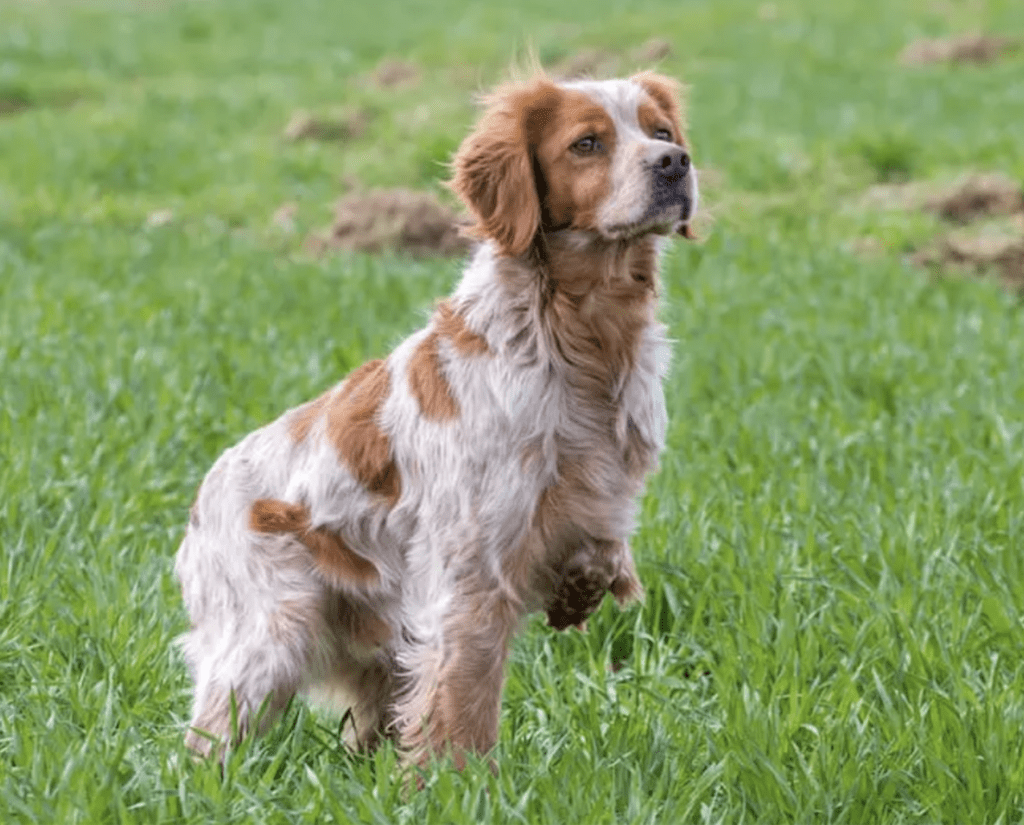
Brittany Characteristics and Form
| Characteristics | Details |
| Name | Internationally: Épagnuel Breton (EB)In the US: Brittany Spaniel (until 1982), Brittany (after 1982)In Canada: Brittany Spaniel |
| Size | Small to medium |
| Tail | Some dogs carry genes for a naturally short bobtail. Long tails are cropped. |
| Coat | Medium long |
| Coat Color | Orange and white, liver and white, black and white, tricolor |
| Health Issues | Seizure disorders, patellar luxation |
| Personality | Good-natured, eager to please |
| Population | Large. More than 20,000 Brittany pups are whelped each year worldwide, mainly in France, Italy, and the US. |
| Pace | Medium to fast gallop |
| Range | Medium to wide |
| Good Choice For | Grouse, woodcock, pheasant, snipe, partridge, hare, rabbit |
Among the smallest of the pointing breeds, the Brittany has “maximum qualities in a minimal size.” It has a unique, square “cob” body shape, a slightly rounded head, and triangular, high-set ears. Some even have a naturally short bobtail.
The ideal Brittany coat lies flat on the body and is feathered on the ears and legs. The French standard permits five colors, with or without a roan pattern: white and orange, white and black, white and liver, tricolor (liver, white orange), and tricolor (black, white, orange). The American Kennel Club standard does not allow black.
The Brittany is also one of several breeds that has the gene for a bobtail. Historically, the bobtail was a defining breed feature and even part of the name of its breed club, the Club de l’Épagneul Breton á Courte Queue (Club for the Short-tailed Brittany). But breeders had a hard time maintaining the trait and some resorted to secretly cropping any long tails that occurred in their litters, claiming they were naturally short. In 1933, club members voted to remove the Courte Queue from its name and to remove the word “natural” from the description of the short tail. Today, naturally short or absent tails still occur in the breed, but less frequently than in the past.
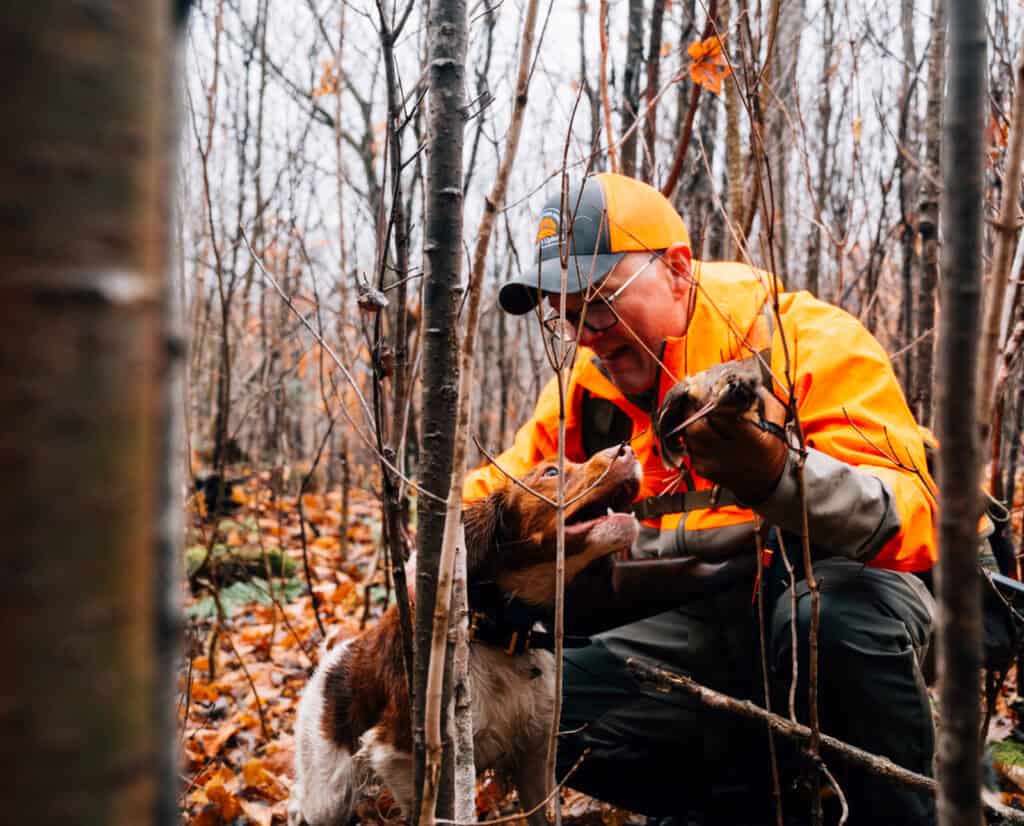
Brittany Training and Hunting Ability
According to Rick Smith, a professional dog trainer, training a Brittany is straightforward.
“Brittanies are on the soft side, and some of them can really sulk if you get on them too much,” Smith said. “But they have a lot of desire and can be as tough as nails when it comes to getting the job done.”
Although they can be sensitive dogs, those working with Brittanies should know it’s okay to be firm at times. However, it’s best to rely on their natural talents and their desire to hunt during dog training sessions.
Field Search
Due to their compact build, most Brittanies have a unique rolling gait. They generally cover the ground at a fast gallop at a medium range. Some lines work closer in and some, especially those developed for field trials in the US, can work much farther out.
“The Brittany is a Continental breed so we don’t expect them to run as fast or far as the British breeds,” said Pierre Willems. “But they are faster and wider running that the other breeds of épagneuls which usually work within gun range.”
Pointing
Typically, Brittanies are very strong pointers. Some develop early on while others take a while longer. But both Willems and Smith told me they are not really known as natural backers.
“Most trials here are run solo and when we do run in braces, it is okay to command the dog to back,” said Willems. “We don’t really select for dogs with strong natural backing instincts. Of course, some are natural backers, but that certainly is not the majority.”
“Backing is really a question of honoring another dog and it depends on the pecking order in the pack,” said Smith. “We do see some natural, spontaneous backing in Brittanies, but not a lot. Anyway, it’s also very easy to teach.”
Tracking
While a number of Brittanies have proven their worth as good tracking dogs, the breed was never really designed for anything beyond tracking a wounded bird or hare.
“Brittanies are bird dogs and most people don’t want them for tracking,” said Smith, “but I guarantee that they will track anything you want if you start them out right and teach them to do it.”
Retrieving And Water Work
Most Brittanies take to water fairly easily, but some need a certain amount of encouragement. Although the breed was not developed to be a water dog, that doesn’t mean it can’t be taught to be a good water worker. In France, in order to become a champion in shoot-to-retrieve trials, Brittanies must pass their deep water retrieving test. However, most Brittanies do not have a thick enough coat to sit in a cold, wet blind for hours on end.
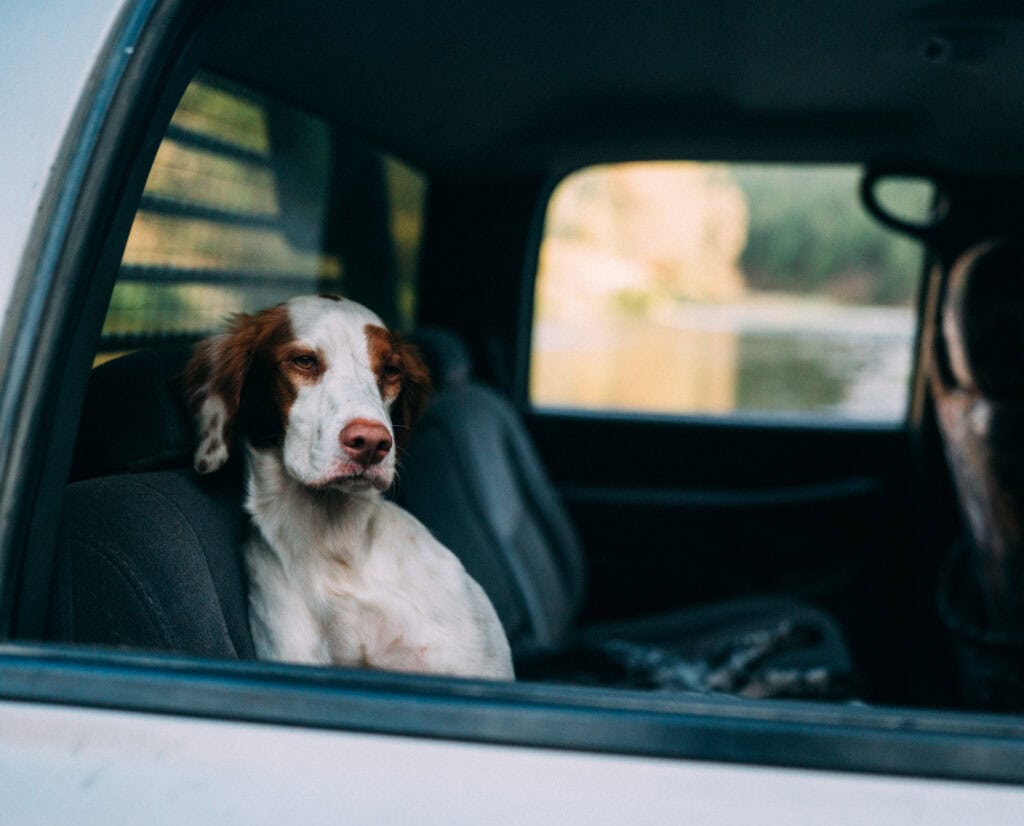
Brittany History and Development
The history of the Brittany can be divided into two parts: before 1907 and after 1907. Tracing the breed’s progress since 1907 is relatively easy. Getting a clear picture of its development before that time is next to impossible.
Brittany is a beautiful region of France. The people who live there are French citizens; they speak, read, and write French and they enjoy a thoroughly modern lifestyle just like the rest of the country. But in order to understand the development of its native breed of pointing dog, it is important to consider just how isolated the region was, and in some ways still is, from the rest of the nation.
Geographically, La Bretagne (“Brittany” in English) is a peninsula in the far west corner of the French hexagon. Culturally, its people have always felt somewhat separate from the rest of the country. Their traditional language, Breton, is not a French dialect but a Celtic language related to Welsh and Cornish. In fact, until the turn of the 20th century, much of Brittany’s population did not even speak, read, or write French. Very few French texts make any mention of what kind of dogs there were in Brittany before 1900.
Fortunately, many of the British sportsmen who traveled to the region in the 1800s wrote articles and published books about their adventures. Reading through them today, a fascinating picture emerges of what the dogs in Brittany were like in the mid-1800s. One of the most detailed accounts is from a book titled The Wanderer in Western France, written in 1863 by George T. Lowth. In it, Lowth describes short- and long-haired hunting dogs that were “found everywhere” in Brittany. He was likely describing choupilles (French flushing spaniels), Épagneuls de Fougères, and other chien du pays (country dogs), including Brittanies.
More than any other French dog, the Brittany was influenced by the land and culture of its native region. It was generally smaller than the others, came in a variety of colors, and was renowned for its robust build. Gaston Pouchain wrote, “This is true for the sheep, the goat, and the horse (of Brittany)…All those men and animals appeared stocky, close coupled, solid, very hardy and with an incomparable, natural strength.”
In 1907, a breed club was formed in Loudeac, France. Led by a lawyer named Arthur Enaud, its members drafted a breed standard and submitted it for approval to the SCC. Also around this time, Brittanies began to appear in shows and trials. In 1905, a male named “Boy” was entered into the L.O.F. (the French stud book). He was the first to be registered as an Épagneul Breton.
From 1907 onward, detailed information about the breed’s development became commonly available.
By the 1960s, the Brittany was becoming the most popular gundog breed in France. It was also developing strong followings elsewhere in Europe, as well as in North America, where it soon became one of the top Continental pointing breeds on the field trial circuit.
Today, the Brittany is one of the most popular pointing breeds on the planet. Descendants of the little dogs from La Bretagne can be found serving hunters from the plains of Patagonia to the Alaskan tundra. They can be seen in the wheat fields north of Paris to the bocage country of their native Brittany. And if your truck breaks down on the dusty prairies of southern Saskatchewan, don’t be surprised to see a Brittany sitting next to the friendly farmer that offers you a lift into town.
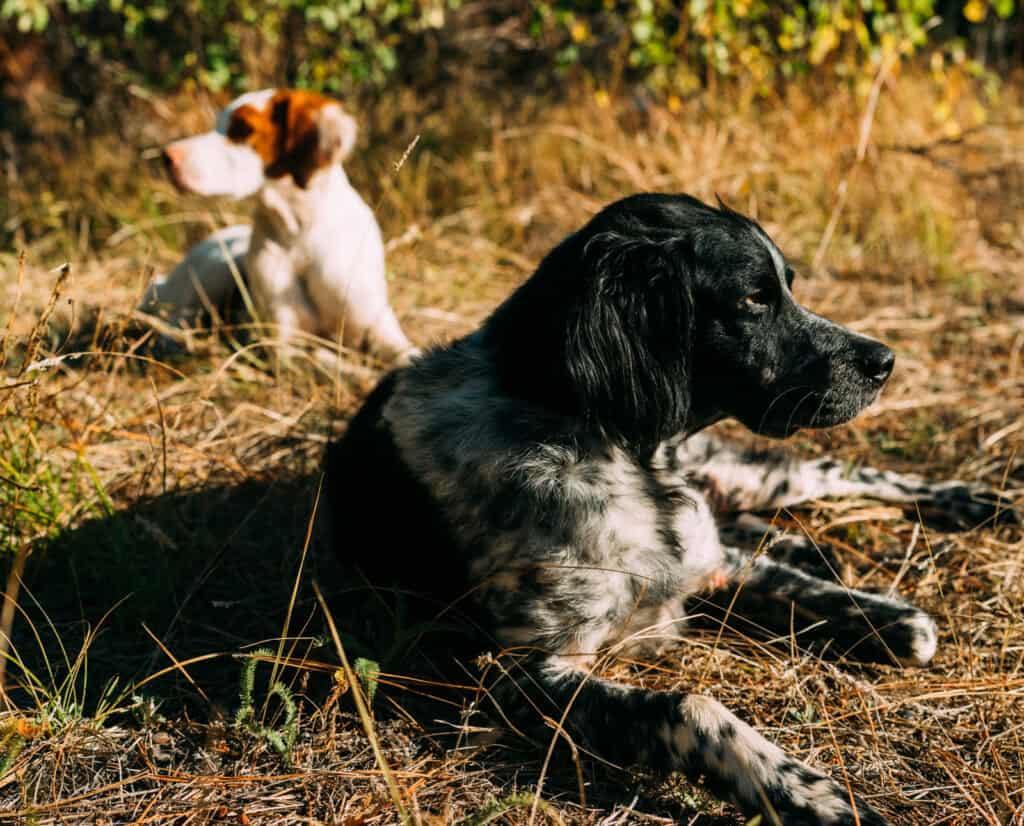
The Split Between American and French Brittanies
For any breed with a strong following on both sides of the Atlantic, there is a risk of different types emerging as breeders follow different paths. In the Brittany, differences in type and hunting styles were first noticed just after the Second World War, and became more obvious after 1956 when the breed standard in France was changed to allow a black coat. Through the 1960s and 70s, the Brittany also developed a strong following on the North American field trial circuit, even among horseback field trial enthusiasts, which led to the development of big running “all age” Brittanies.
These and other factors caused what many feel is a split between American Brittanies and “French Brittanies.” Everyone recognizes that the two types have a shared ancestry and are the same breed genetically, but some believe that after nearly 80 years of moving in slightly different directions, the two types are irrevocably split. In fact, in 2002 the US-based United Kennel Club formally recognized the American Brittany and the French Brittany (or Epagneul Breton) as separate breeds. Members of the Club de l’Epagneul Breton of the United States (CEB-US) now register their dogs as Epagneul Bretons and follow the French (FCI) standard for the breed. The club also sanctions tests and field trials based on French regulations.
The American Brittany vs. Epagneul Breton question is the subject of sometimes heated debate within the various clubs, on internet forums, and in email lists. Personally, I have no dog in the fight. I have seen tremendous Brittanies on both sides of the Atlantic and have a great deal of admiration for the supporters of both types. But anyone looking to purchase a Brittany should investigate the various organizations and breeding approaches to find one that best suits their individual needs and goals.
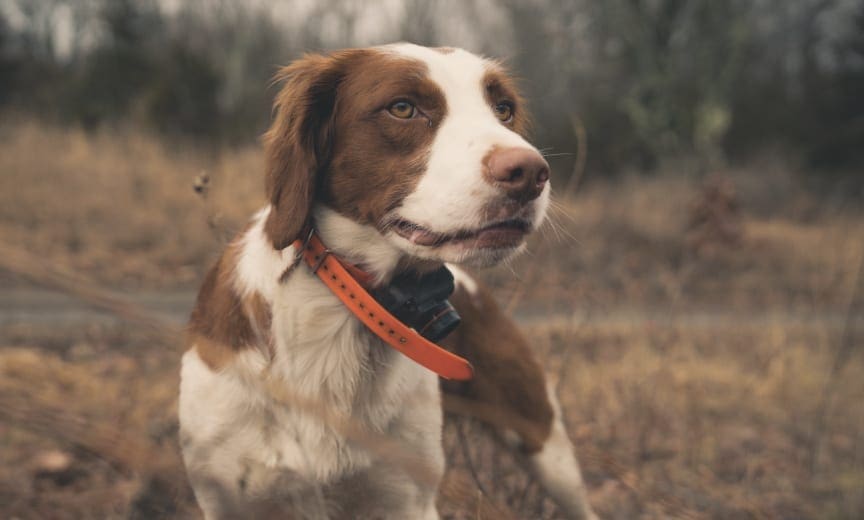
Brittany Clubs
The parent club for the breed in France is the Club de l’Épagneul Breton. There are also breed clubs in over a dozen other countries. Among the largest are the Club Italiano Epagneul Breton in Italy and the Brittany Club of America. For French enthusiasts in America, there is the Club de l’Épagneul Breton of the United States. For Canadians, there’s The Brittany Spaniel Club of Canada.
From their home base in Winnipeg, Craig Koshyk and Lisa Trottier travel all over hunting everything from snipe, woodcock to grouse, geese and pheasants. In the 1990s they began a quest to research, photograph, and hunt over all of the pointing breeds from continental Europe and published Pointing Dogs, Volume One: The Continentals. The follow-up to the first volume, Pointing Dogs, Volume Two, the British and Irish Breeds, is slated for release in 2020.




Great article. I have had Brittanys for over 40 years and show, hunt, early field trials and now hunt tests. You handled the French and American Brittany issues very nicely. I have bred 17 Master Hunters and the #1 show Brittany (who hunted)
Thanks for this informative article! The Brittany breeder we’re about to get our third Brittany from — Sunburst Brittanys, New Plymouth, Idaho — is really knowledgeable and smart about how they breed, and they produce amazing hunting dogs that also are great house dogs. They breed both American and French, and I’ve had the pleasure of hunting with all of their sires and dams (along with our own amazing dogs from their kennel) and can’t imagine better dogs for chukar hunting. Finding a quality breeder can be challenging. If anyone’s interested in a Brittany, definitely check out Sunburst.
Thank you for your article. Thanks for your dedicated research & touching upon the color black in the French standard. There is a misconception in the US that the color black was added to the standard in 1956 (this effort was led by Gaston Pouchain) as a response to decimated Breton numbers after the war. Thank you for pointing out this was not the case. Gaston led the effort to add black back to FCI standard to Return to the original standard put forth to SCC in 1907.
Overall, Yes, they have evolved on both sides of the Atlantic. When you go back to the early American imports of the 1930’s & 1940’s, they look quite similar to one another. But now, they no longer resemble each other. I would offer they are now genetically different since an American Brittany will not throw sable or blue/black dilutes as we’ve seen in the Epagneul Breton.
The UKC has split the breeds & many of us believe the AKC should recognize the Epagneul Breton as a separate breed apart from the American Brittany. This needs to happen in order for us to compete internationally since AKC is the only registry recognized by FCI & the rest of the world.
I would also comment that there are elements on both sides that continue to outcross to other breeds & is evident in recent years.
Gerald Giordano
President,
Epagneul Breton Club of America
I’ve had 4 Brittanys and everyone of them was a wonderful dog. They were all very smart, had great noses, and were extremely obedient, as they have a great desire to please me. Currently I hunt quail with a 3 year old German Shorthair and a 10 year Brittany, Brownie. My Brittany is the one I depend on the most as he doesn’t run through birds and is rarely out of sight. My red Brittany, Duke was dying of cancer, yet still went out with me on New Year’s Eve afternoon, 2016. He never got more than 10 yards away from me that day, but made the final point of the year on a single, then retrieved it when I shot the bird. He then passed away during the night, and at 6 a.m. I hears my other Brittany howling like a wolf in their pen. I knew that Duke had passed away, and I was right. It was a sad New Year’s morning burying my sweet boy.
I had Brittany’s for 25 years. I feel that American field trials have been detrimental to the breed in the U.S. What used to be a close working foot handled dog has in some cases become a huge running hyper dog. At the national Brittany field trial championships the handlers need to ride horses to keep up and have scouts to find the dog on point. Ask yourself if this is what the close handling poacher’s dog should have become. I feel that field trials have hurt hunting breeds as much as AKC shows have.
If I had continued to hunt with Brittany’s I would have bought a French Brittany as i feel they have been true to the original dog.
I now hunt with Wirehaired Pointing Griffons. My long time hunting partner once remarked, ” The Brittany hunts for the Brittany and the Griffon hunts for us”.
have a britt – one element missing – little thieves they are – even at age 6, will still snatch items from from table tops and run off to cache them or just chew – his nickname: méchant
Great article. Great book.
A lovely article for a lovely breed. I so love these gentle velvety headed dogs. I have only ever been owned by a Brittany of no known parentage other than their rescue papers. A marvelous adaptable pet when their hunting career has finished,
hello !
I am a dog show judge and hunter as well
Recuentos had a conversation about the versatility of Bretons
Would you consider it’s a complete versatile breed in all subjects ?
Your answer will be highly appreciated
lorenzo@provet.com.ar
Wow, who’d of known. I’ve been following the “A Bird Hunter’s Thoughts” blog by Randy Schulz for years plus his youtube chanccel and he always seems to use his Brittanys as flushing dogs. From reading that blog, I didn’t know that Britts are a pointing breed. If you want a flusher, get a flushing breed, right?
His latest blog entry “Chukar Hunting” he describes how his Brittany and hunting buddie’s Setter run all over the place busting chukars (no pointing) and the hunters shoot the birds. I agree with Jacob Weeks, if you want a flusher, get a flusher
I am on my second Brittany and she is an amazing dog, she goes through fields after other dogs have worked them and finds birds. She is 10-1/2 years old, my first Brittany was an amazing hunter as well, she lived to be 15 years old and hunted in her 15th year with me, a little slower covering the ground but still found the birds